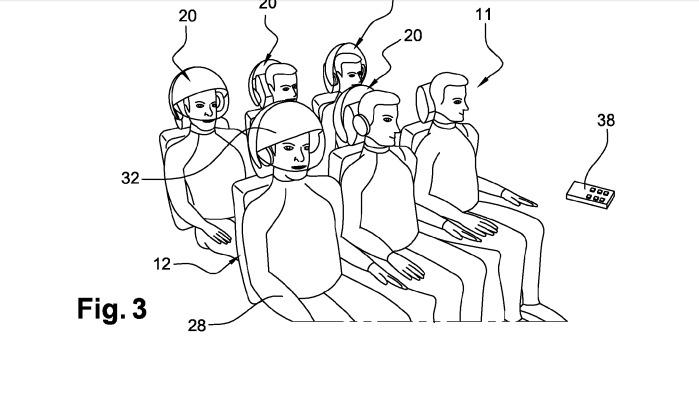Aeroplanes of the future: From ultra-luxury AirCruises to planes that turn into trains and passenger seats that make us human batteries
The future of flight is looking increasingly barmy. Here’s what we’ve got to look forward to

Your support helps us to tell the story
From reproductive rights to climate change to Big Tech, The Independent is on the ground when the story is developing. Whether it's investigating the financials of Elon Musk's pro-Trump PAC or producing our latest documentary, 'The A Word', which shines a light on the American women fighting for reproductive rights, we know how important it is to parse out the facts from the messaging.
At such a critical moment in US history, we need reporters on the ground. Your donation allows us to keep sending journalists to speak to both sides of the story.
The Independent is trusted by Americans across the entire political spectrum. And unlike many other quality news outlets, we choose not to lock Americans out of our reporting and analysis with paywalls. We believe quality journalism should be available to everyone, paid for by those who can afford it.
Your support makes all the difference.“Air cruises” – ultra-luxury planes flying groups of guests on round-the-world itineraries – just might be the next big thing in travel. That’s if high-end operator Crystal Cruises’ new Crystal AirCruises plane, launching next autumn, is a hit.
Crystal’s Boeing 777-200LR will be kitted out with lie-flat seats, dining tables, divans and a bar, with room for 84 guests to fly in style. The company is also said to be planning themed flights, with the likes of visiting Michelin-starred chefs – though cabaret acts are unlikely to feature. Itineraries are planned to last either 14, 21 or 28 days, and passengers will stay in luxury hotels when on the ground.

While experiencing the AirCruises plane will only be a matter for the privileged few, it got us thinking about other aviation innovations slated to take to the skies in the not-too-distant future. Here are some of our favourite plans and patents for the aeroplanes of tomorrow.
The plane that turns into a train
The “Clip-Air” concept is the brainchild of the Federal Polytechnic Institute in Lausanne, Switzerland, and involves a detachable fuselage that can be transferred from an “airframe” onto train tracks. Theoretically, this would mean passengers can transfer from a plane to a train without ever leaving their seat. While it’s unlikely this could become a reality for several decades, it’s not the first time the idea of a detachable passenger cabin has been mooted. Last year, Airbus filed a patent for that very idea, arguing that it would save time to board passengers onto a removable cabin, and that the plane could even undergo maintenance while passengers boarded elsewhere.
The cabin that will make you feel zen
Just last week, Airbus said it was seriously considering the possibility of coating the interior of cabins in a light-emitting material, onto which they would then project images of the outside environment – be that a blue sky with clouds, or a night sky with stars. The idea is that it would improve the cabin environment for passengers – though if you’re already afraid of flying, the sensation of whizzing through the air at several hundred miles per hour with no tin can to protect you might not help.
An innovation you will definitely be seeing, however, is the company’s solution to improving overhead storage – and not a minute too soon. The new A350 and A330neo models have taller overhead bins where bags sit vertically, as though on a book shelf, which should be far more efficient than the horizontal madness we have now.

Seats with in-built VR helmets
Another Airbus idea is the unfortunately named “sensory helmet”, which would be built into passenger seat headrests so you can isolate yourself in your own VR world (ie, pretend you’re not living the nightmare of modern commercial aviation). The patent says the helmet would “preferentially” also have a function where nice odours could be diffused into it. Particularly useful on a long-haul journey after the inflight meal has been digested.
Boeing’s folding wings
The plans for Boeing’s 777-9X model – which will be the largest twin-engine jet in the world – show such an enormous wingspan that the tips will need to fold up in order for the craft to fit into airports. The wingspan, of just over 235ft, will be reduced by 12ft when the hinged tips fold up. Locking pins will stop the wings from accidentally folding up during the flight.
Benches instead of seats
More from Airbus, and this time it's replacing conventional aeroplane passenger seats with, erm, benches. The patent, published earlier this year, would bring an end to defined seat width, depending on how many people are fit onto the bench – which could be a good or a bad thing, depending on how the benches are sold.

The flat-pack plane
Amazingly, the flat-pack plane is a real thing. Cambridge, England-based company e-Go has created a one-person aircraft that can be taken apart and packed away after a flight. The plane is actually available on pre-order now, and will set you back a tidy £50,000. The company is now working on multi-seater flat-pack planes, so watch this space.

Energy-harvesting seats
Our final entry is the energy-harvesting seats proposed by France’s Zodiac Aerotechnics, which proposes a sort of Matrix-style dystopia where humans become batteries. Passenger seats on commercial flights would capture “ambient energy” from human bodies to provide power and lower the overall energy consumption in an aircraft cabin. Creepy much?
Join our commenting forum
Join thought-provoking conversations, follow other Independent readers and see their replies
Comments